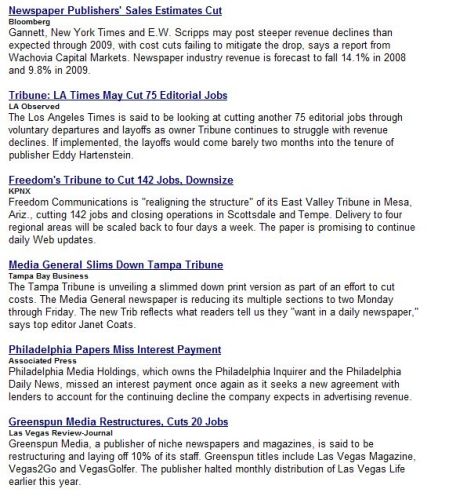I’m about to go do a presentation on social media. The topic this time: How to use various search-and-discover tools to monitor what’s being said in the socialwebosphere about you, your company, your partners or competitors, your spouse, your enemies, etc.
The audience is a group of people who do PR, marketing and communications for non-profit groups in the healthcare field. The people in attendance paid $495 to hear my presentation–though, to be fair, a lunch, dinner and a bunch of other, far more interesting speakers are part of the deal too.
But I thought I’d share the useful stuff right here in my blog, where everything is free. And–this is a guarantee–worth every penny.
The presentation lists a bunch of tools you can use to monitor what’s being said out in the social web. I know there are many others, but the ones I’m listing are both user-friendly for late adopters and likely, at least as a group, to produce a good scan of what’s being said in blogs, on Twitter, on discussion forums and hyperlocal news sites.
If any readers of this blog know good tools to supplement or replace the ones I’ve listed here, please leave a comment below. I’ll update the list and republish the full list in a later post.
Anyway, it’s about 12:30 p.m. and I’m on at 1 p.m. Better run.
Here’s the handout I’ll give out.
Learning to Listen In
The following tools help you monitor the many conversations happening all around the Internet. Some comments may involve your business, institution or key people. You may not want or need to respond. But knowing what people are saying is vital.
Listening is also an easy way to familiarize yourself with the baffling world of social media. Later on you may want to use these same techniques in marketing, branding, communication and customer service efforts. Talk like a marketer, though, and they’ll hate you.
Hints:
Most of these tools let you save your searches. Some send results to your e-mail, your iGoogle page or any RSS reader [Yahoo360, Netvibes, Bloglines, etc.]
Be sure to “listen” not only for your institution or firm’s full name, but for its nickname, short name, common misspellings, etc. Don’t forget about the names of key people.
The following tools are listed in approximate order of value. Start with Google Alerts, and see which others turn up content you’d otherwise miss.












Recent Comments